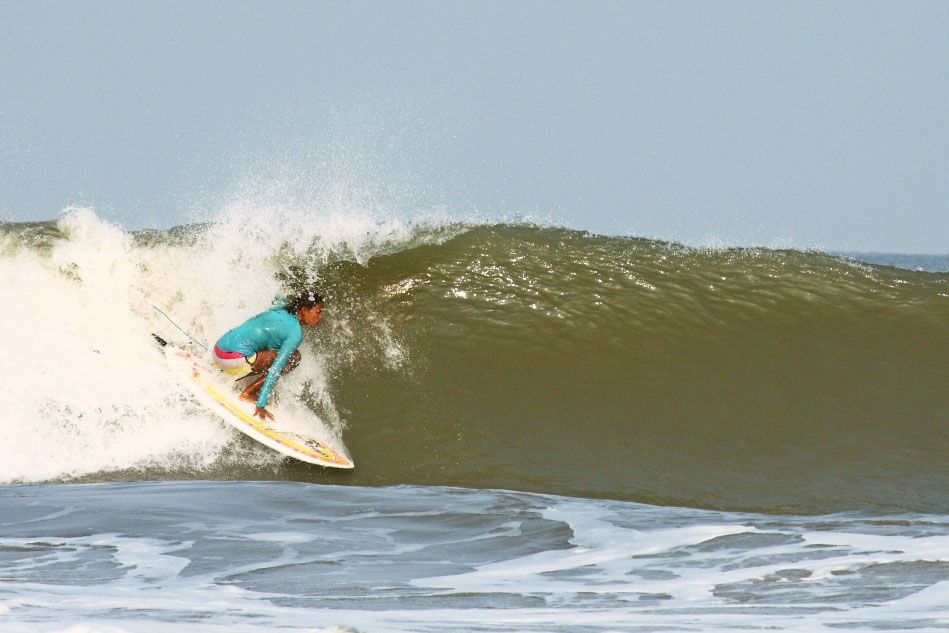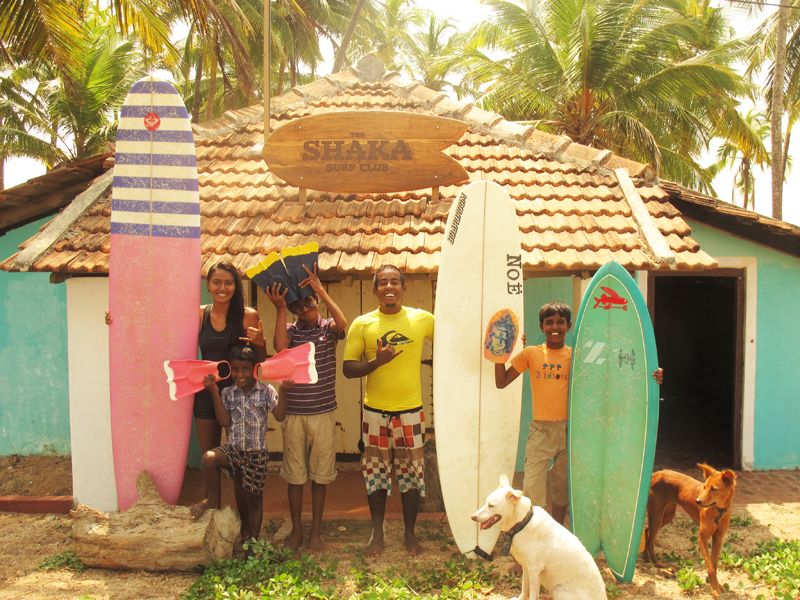Piolets d'Or Announces the "Significant Ascents" of 2023
This list of 68 climbs is effectively a "long list" used to select nominees of the prestigious alpine award.

She had been dreaming of California, its beaches and a parched summer, never knowing that her paradise was just a train ride away from Bombay.
Several years later, Ishita is the country’s first and only Roxy girl, flying to Europe for photo shoots and gracing glossy magazine pages. But before there was a surf community and before the flashlights of fame, there was just a girl, a boy and a shared surfboard.
The Beginning of the Beginning
Ishita and Tushar made the move from Bombay to Manipal in pursuit of something other than big-city life. While at Manipal University, a chance encounter with a German exchange student led them to a place called the surf ashram, where people could stay and learn to surf. ‘Our first reaction was “no way!”’ says Ishita, ‘You grow up assuming that there are no waves because no one is doing it; I always wanted to learn how to surf, but I just assumed that one day I’d go to California.’
The surf ashram was expensive, and to make it affordable, the couple made a deal to bring along groups of university students to get a group-discount. They thought their friends would be equally excited at the prospect of surf and sand, but by the time the weekends arrived, their original groups of ten would dwindle down to around four, including her and Tushar. It didn’t work out, and the ashram suggested that they buy a board and surf with them whenever they liked. ‘At the time even a second hand board was expensive, around 10,000 rupees, so we sold pretty much everything we had,’ says Ishita.

When they eventually got a board, they shared it. When Tushar would be in the water, Ishita would stay on the beach applauding his effort. ‘I think it took us longer because we pretty much taught ourselves. It was a really special time -back then you could count the number of surfers on your fingertips.’
One board led to more -- bought with money the couple made giving their friends surf lessons. By the time Quicksilver made its entry into India, Ishita and Tushar already had a surf school. The brand recognised their effort and gave them the push they needed to find a proper location, and the Shaka Surf Club was officially established.
Building a Community
Passion is powerful, and theirs has changed the lives of many, especially the local community. At first, when Ishita and Tushar would surf, the children from the fishing village where the Shaka Surf Club is based would stand on the beach and watch. They were scared of the ocean: a fear that’s been passed on like an heirloom. ‘Most of the fishermen at the village where we surf don’t know how to swim, and their kids don’t know how to swim, even though they live right on the beach,’ says Ishita. When she and Tushar asked the parents of their spectators if they could take them along one day, they were surprised the answer was yes. ‘We took these two kids out and within minutes the entire village was out on the beach - they couldn’t believe their kids were surfing.’ Initially, there were just two, but soon others joined. They now have something of a clubhouse, a place where the growing group can hang out and surf. The kids that used to look down upon themselves for living in a fishing village, who aspire to someday move to the big city, now also know how fortunate they are to live by the sea. ‘We wanted to show them what they have. Ever since they started surfing, it’s changed their outlook on life,’ says Ishita.

These kids now want to keep their beaches clean, and they know the basics of water safety; each one is a lifeguard on their own beach. In a country where there are approximately 60,000 drowning deaths a year, a step towards promoting love and respect for the ocean is just what is needed. The positive impact of surfing on this community can be seen if you happen to be a passer-by littering their beach. They’d tell you off. ‘There should always be that aloha vibe,’ says Ishita, ‘everyone supporting each other and growing together.’
Why are there no women in the water?
Apart from her talent and drive, Ishita is known for being the first female professional surfer in India. In the 21st century, in a country of more than a billion people. When I expressed my incredulity, she laughed, ‘I know! That was my attitude too.’ She and Tushar travelled along the coastline a few years ago, searching for women surfers. The hunt proved what they hadn’t believed at first: that Ishita was really doing what no one else was at the time. She’ll say it was luck that let her spend her days by the water, and chance that changed her life. But you should know that Ishita got here though sheer determination.
'When I started I was really weak, and I was the only girl in the water,’ she says, ‘The guys would paddle with such ease, they have natural upper body strength. I would get beat up and go black and blue. I could see myself being physically weaker and it took me a long time to reach that same level.’ Those were her personal battles and she fought them well, but Ishita also faced disapproving comments about her skin colour. She says, ‘People in India are not shy about things like that! Everyone, including my professors at college, would comment, “Oh, Ishita you look so dark, you look like you’re working in a charcoal factory,” or stuff like that.’ It’s strange when you think about the flipside, and how all the international female surfers Ishita meets compliment her on her bronzed skin.

This could be one of the reasons that Indian girls aren’t surfing as much, despite the potential the country has for a beach culture (beyond just partying in Goa). A lot of people come to surf with Ishita now, and amongst them are girls who like the sport but don’t want their skin to naturally tan in the sun. ‘It’s just not considered beautiful,’ says Ishita. I still can’t get over the irony of a Roxy model being subjected to negative comments about her skin tone.
Despite her recent success, Ishita knows there is always room for growth, she strives to be better every day and teaches her students to never underestimate the power of the ocean. If you want to catch up with her now, you’ll probably find Ishita near the sea, trying to balance work-life and surfing, while plotting her next revolution.
2nd best newsletter in the universe